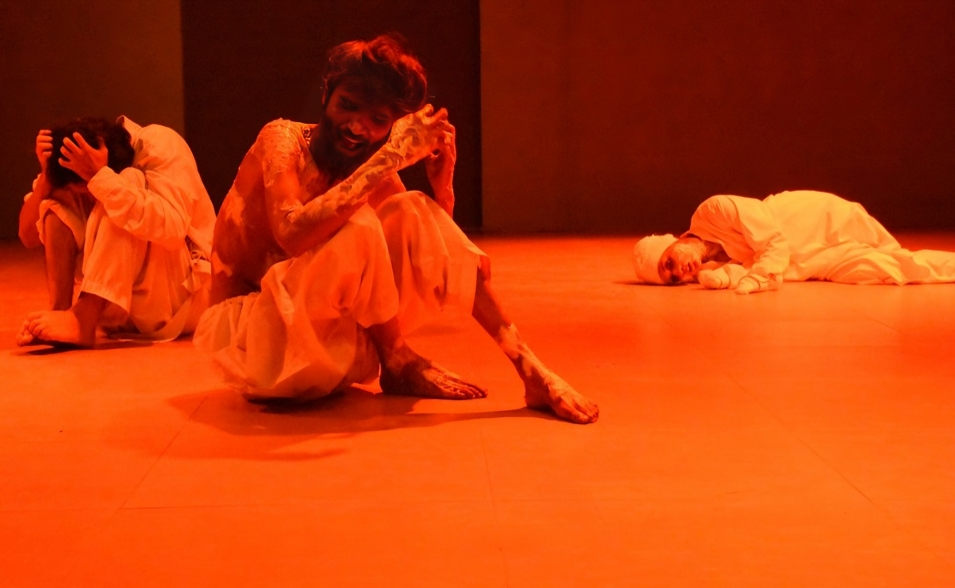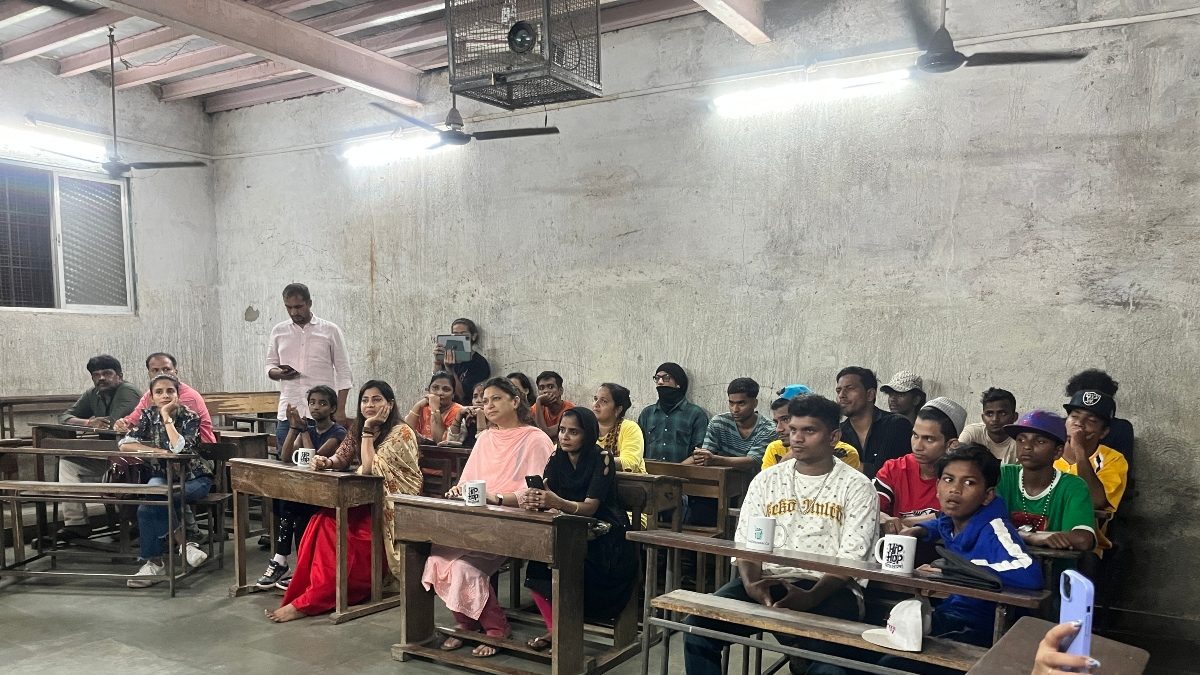Budweiser and Coca-Cola, sparklers and flags, a picnic with family and friends — it looks like a typical Independence Day in the United States — except that the flags are Confederate, and they’re being buried in a shallow grave.
This is the futuristic patriotic tradition envisioned by the multimedia artist Josh Kline in a three-channel video installation from 2017, titled “Another America is Possible,” on view at the Whitney Museum of American Art.
Kline’s piece seems heartfelt — suspiciously so. This cinematic vision of Americans harmoniously disavowing a racist symbol has the dreamlike clarity of a pharmaceutical ad. It’s sappy, clean, resolved — a satire of progressive propaganda, goosing the libs.
Blunt sentiment, cushioned by an uncertain dose of parody, defines Kline’s career-spanning survey at the Whitney, down to its grand, neocon-inspired title: “Project for a New American Century.” The 43-year-old New Yorker flirts with the idioms of contemporary propaganda — ads, memes, influencers — just as the artist duo Vitaly Komar and Alexander Melamid tackled the posters, flags, and slogans of the Cold War. (Their retrospective, “A Lesson in History,” filled the Zimmerli Art Museum at Rutgers University in New Brunswick, N.J., through July 16; a portion featuring work they made after relocating from the Soviet Union to New York in 1978 will reopen there in September.)
Propaganda tries (often in bad faith) to win an audience to a particular belief. Kline, Komar and Melamid argue that art actually represents a messier, unsettling, uncertain reality — and therefore a more honest one. Rather than declaring a position, they dwell between irony and sincerity. This tang of ambivalence keeps their art from becoming the propaganda it evokes.
Komar and Melamid joined forces in the 1960s, working under the eye of the Soviet Union. (When they moved to New York later that decade, they turned their wit against capitalism.) They were part of a group of artists, called the nonconformists, who spurned and parodied Soviet propaganda by making art in its mold. One of their earliest interventions, from 1972, is a red banner bearing a slogan used to promote the Soviet space program: “We Were Born To Make Fairytales Come True.”
Unlike any state-sanctioned banner, however, theirs is signed like a painting. Claiming the party line in an artwork starts to unravel its power — in a museum, it’s less than clear what that slogan means. Are artists purveyors of fantasy or revealers of truth? Can they be both at once?
This question becomes especially pointed in the duo’s satires of Socialist Realism. A textbook form of art as propaganda, the style embellishes scenes of everyday workers and party heroes, hoping to inspire the people to greatness — and quell dissent. Their painting, “The Origins of Socialist Realism,” from 1982–1983, depicts a goddess resembling Botticelli’s Venus tracing Stalin’s lamplit silhouette on a stone temple. This meeting of historical and mythological figures, rendered like an official ideal, does more than mock the supposed sincerity of the style; it undermines the claim that art should distill the world into plain truths.
Kline must walk a blurrier line than Komar and Melamid. In the 1980s, President Ronald Reagan liked to trot out a Russian saying: “Trust, but verify.” Komar and Melamid went their separate ways in 2003, still largely committed to painting and conceptual art, not new media. Today, the country that won the Cold War is polarized by two political parties, and Kline’s “Project for a New American Century” seems inundated with the cynical, murky morality of the internet.
Like an ambiguous political meme, Kline’s work has a way of wrong-footing you for believing its message, but shaming you for doubting. Where Kline appears to endorse positions on climate change (he incorporates video testimonials from actors playing disaster survivors), income inequality (3-D prints of dismembered wage workers on carts and in boxes), police surveillance (his infamous statues of Teletubbies in riot gear) or any of the other issues treated in the Whitney survey, he’s really just making art. Calls to action seem naïve. It’s all an artist can do to portray the fractured, heavily mediated political landscape of the last decade, marred by deceptive video editing, deep fakes of public figures, troll farms, Twitter bots and other forms of dissemblance.
Nowhere is the sentiment as convoluted as in Kline’s take on the wars in Iraq and Afghanistan. The 2015 video “Crying Games” uses outdated face-swapping software to paste pictures of the former President George W. Bush, the former Secretary of State Condoleezza Rice, and the other architects of the wars onto actors dressed in prison jumpsuits, muttering and blubbering. “I’m sorry,” says a fake Secretary of Defense, Donald Rumsfeld. “All those people …”
The work is a dark joke — it probably won’t change minds, and it certainly won’t un-ruin lives. But then, there’s something beautiful about the way the shoddy digital mask glitches and falls away, revealing a look-alike of the former vice president Dick Cheney, mucus and tears streaming down his face. And there’s a palpable sadness in the emptiness of Kline’s righteous gesture, a sucking void at the video’s center: the impossibility of truly mourning the war’s victims.
Propaganda-like art won’t undo the damage and confusion of actual propaganda. What Kline’s work does, though — and Komar and Melamid’s, too — is make space for ambivalence. Art shouldn’t tell us what to think, and we shouldn’t want it to.
Josh Kline: Project for a New American Century
Through Aug. 13, Whitney Museum of American Art, 99 Gansevoort Street, Manhattan; 212-570-3600, whitney.org.
Komar and Melamid: A Lesson in History
Reopens Sept. 6, Zimmerli Art Museum, Rutgers University, 71 Hamilton Street, New Brunswick, N.J.; 848-932-7237, zimmerli.rutgers.edu.







